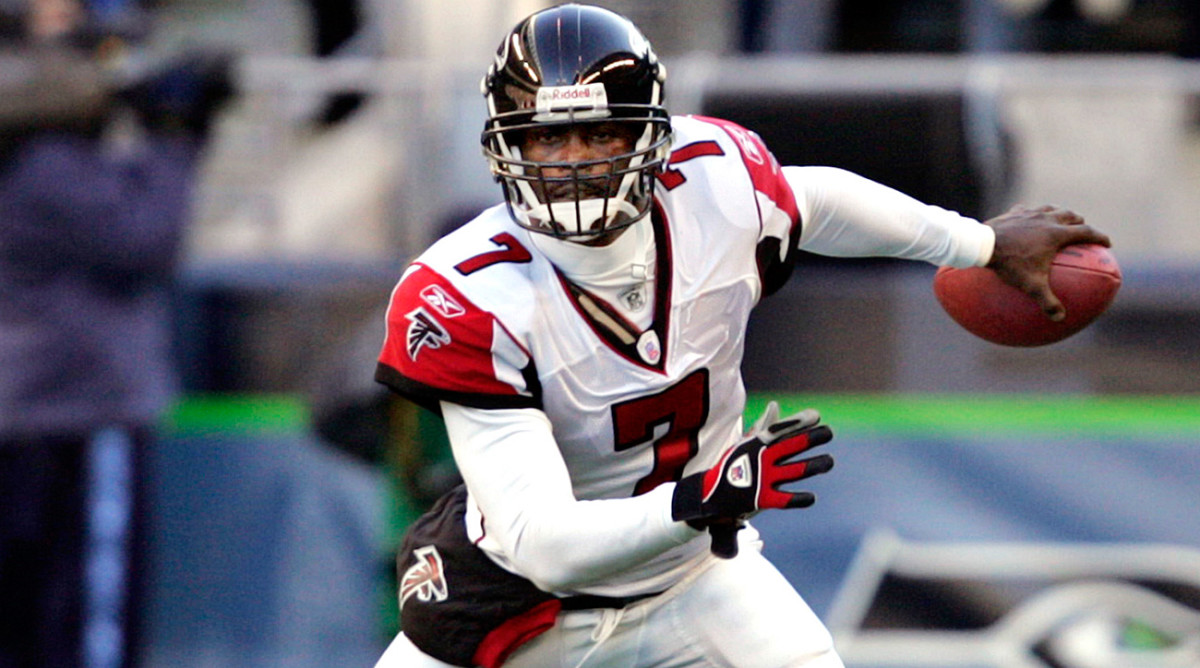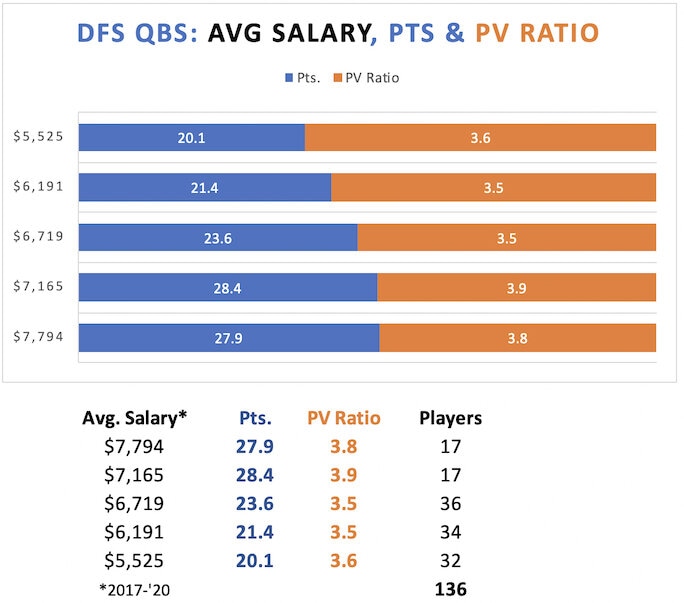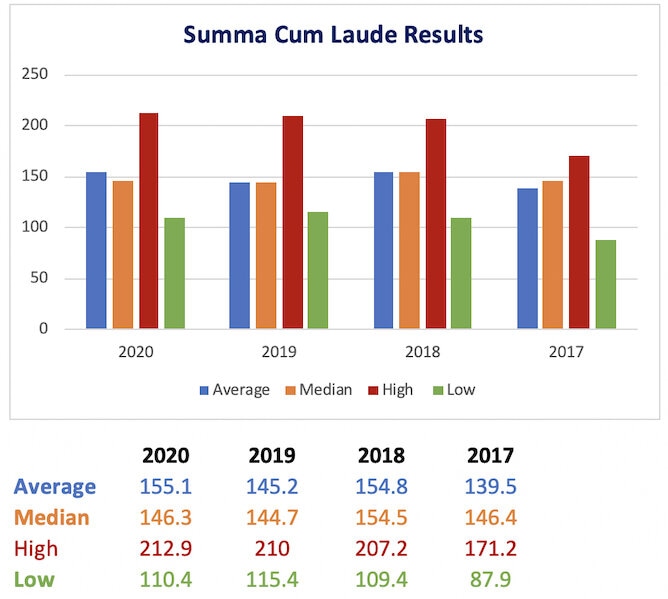Draft Strategies | Depth Charts | Mock Drafts | SOS | Tools | ADP
Diehards Staff Experts Poll | Draft Simulator | University Videos
2021 DFS Cash Game: Quarterback Breakdown and Analysis

2021 DFS Cash Game:
Quarterback Breakdown and Analysis
It has been a compelling journey observing the rise of the dynamic, dual-threat quarterback in the NFL and how the fantasy football game has changed over the past five years. If you are a college football diehard like myself, you saw the imminent evolution.
The Uber-athletic playmaker has dominated on college campuses for over a decade, and it was only a matter of time before the NFL adjusted to the talent in the pipeline. Now, fantasy footballers are scrambling to acquire the elite gamebreakers on their teams in all league formats. DFS players are also captivated by the enticing-floor and high-ceiling of signal callers who score points on the ground.

As a history teacher and fantasy fanatic, I love to reflect on the game and how it has changed over my lifetime. In 1961, Vikings’ quarterback Fran Tarkenton burst on the scene with the expansion franchise. During an era of conservative pocket passers, the mad scrambler rushed for 308 yards and five touchdowns. When his career ended, Tarkenton totaled 3,674 rushing yards and 32 touchdowns. Some of my favorite all-time highlights are of the future Hall of Famer eluding pass rushers while retreating, darting and dashing behind the line of scrimmage before firing off a pass downfield.
When I first played fantasy football in 1989, two quarterbacks stood tall: Dan Marino and Randall Cunningham. As a fan, I had never witnessed a player like the Eagles’ high-flying quarterback. From 1986-1992, Cunningham rushed for over 500 yards in five of six seasons, including a career-best 942 in 1990—he missed the 1991 campaign after suffering a season-ending injury in the first game. He also scored 28 times and passed for 125 aerial strikes. Clearly, two decades ahead of the league.

Ten years later, Michael Vick captivated the college football universe while leading Virginia Tech to the National Championship game against Florida State. In the 2001 NFL Draft, the Falcons selected Vick with the first-overall pick. In six seasons in Atlanta, Vick surpassed 590 rushing yards four times and became only the second quarterback to eclipse 1,000 rushing yards in 2006. He concluded his 13-year career with 6,109 rushing yards and 36 touchdowns.
None of the aforementioned playmakers ever guided their teams to a Super Bowl, and for decades, coaches, scouting departments and organizations did not want to build their franchise around a dual-threat quarterback. Over the last five years, the top college quarterbacks have been productive with their legs and forced the NFL to adapt to the incoming talent in the pipeline.
In 2021, it became apparent that astute DFS diehards had also changed their strategy: In cash games, selecting a running quarterback in your DraftKings lineup became a staple of a weekly lineup. I was no different than the masses last year.

In 2020, my strategy evolved to pinpoint dial-threat passers in my DFS lineup. I only play in 50-50 contests, and one of my key decisions was selecting a quarterback. Among my 34 QB selections, I selected a dynamic runner 19 (56%) times. In an effort to be completely transparent, I have posted a link in Google Sheets of the raw data from all of my weekly lineups.
Copy and Paste Link:
https://docs.google.com/spreadsheets/d/1vmtOcHnamCqNitTT4PUgFCbwYoNCHRm_GyHDCCgFoYk/edit#gid=0
Scoring Breakdown: Average Salary, Points and PV Ratio
I immediately wanted to look at the results for paying up ($7,000-$8,000) at the position. Over three years, I invested in the upper-echelon of quarterbacks on 34 occasions. There is no doubt that the investments paid a healthy dividend: The selections averaged 28.1 points and returned a spectacular 3.75 PV ratio. Patrick Mahomes was the most rostered quarterback (10) in the price range, surpassing my targeted PV ratio of 3.0 while averaging 26.4 points.

The middle class ($6,000-$6,900) provided the most attractive price range to invest. In 70 lineups, I chose a quarterback in the aforementioned category and averaged 22.5 points with a 3.48 PV ratio. There is more variance and risk in this category, scoring over 30 points 14 times (20%) and less than 10 points in six contests (9%). In comparison, the upper-echelon quarterbacks fell below 20 points only four weeks (12%).
Scholar’s Tips for Targeting Quarterbacks in DFS Lineups
1. Opponent Rankings versus Quarterbacks: Bottom 10 Defensive Units
2. Vegas Odds: Over/Under 46 points
3. Home Underdog: Advantageous 4th Quarter Game Script
4. Pass Attempts and Completions over the past three games
5. Salary Cost vs. Personal Rankings
Looking at the results among the basement dwellers, I am satisfied with the results. I identified 32 starters under $6,000 and am more than happy with the results: My picks averaged 20.1 points and achieved a 3.6 PV ratio.
Scholar’s DFS Bargain Basement Megastars
-
Kirk Cousins, Vikings: 37.3 (2020)
-
Ryan Tannehill, Titans: 31.5 (2019)
-
Andy Dalton, Bengals: 28.9 points (2018)
-
Case Keenum, Broncos: 25.1 points (2018)
-
Kyle Allen, Panthers: 25.2 points (2019)
In order to be comfortable in the lower price range, DFS players must embrace risk and variance. On a positive note, my selections surpassed 25 points 10 times but scored less than 10 points in four lineups.
Quarterback DFS Conclusion
Analyzing the numbers, it is apparent that a DFS player can succeed in any price range at the quarterback position. Yet. dual-threat quarterbacks have changed the game.

I am no longer worried about the salary as much as looking at the matchup using my Tips for Targeting QBs that I posted above. However, I still prefer to live in the $6,000-$7,000 range to allow more cap room for other positions.
Scholar’s Fun Facts: DFS Quarterback Cash Game Results
-
Over 5.00 PV Scoring: 20 (15%)
-
Over 3.00 PV Scoring: 86 (63%)
-
Less than 1.00 PV Scoring: 6 (4%)
-
Over 30 points scored: 31 (23%)
-
Over 20 points scored: 87 (64%)
-
Under 10 points scored: 10 (7%)
Feel free to DM me on Twitter, @GridironSchol91, with any questions and comments.
